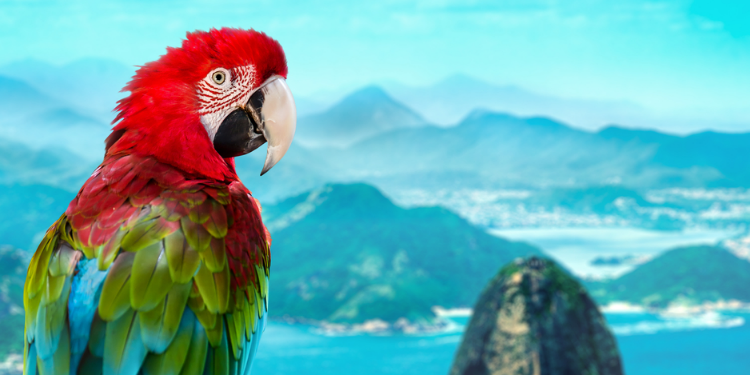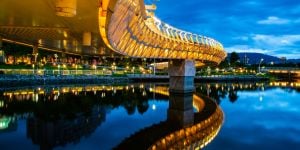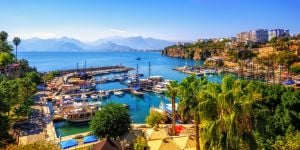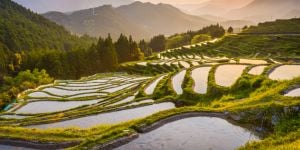
Brazil

Brazil is home to the largest and most diverse wetland in the world, the Amazon River. This natural wonder offers a variety of activities, from tree climbing and piranha fishing to caiman spotting and observance of the rubber-tapping process below swinging monkeys. In Brazil, you will be awarded some of the most spectacular views, if you hike to the top of the 240-metre-tall Cachoeira da Fumaça waterfall. Stretching over 200,000 square kilometres, the Pantanal wetlands in western Brazil, are home to unique wildlife with over 700 bird's species, 100 different mammals, 260 species of fish, and 80 reptile species. We cannot talk about the uniqueness and beauty of Brazil without mentioning the Lençois Maranhenses National Park with the white dunes, which at certain times of the year are full of blue or emerald waters. The Fernando de Noronha archipelago of 21 islands and islets in the Atlantic Ocean is 254 kilometres off the Brazilian coast, and hosts two of Brazil's best beaches: Praia do Leão and Baía do Sancho. Are you ready to swim with baby sharks, sea turtles, and spinner dolphins?
Mexico

With so much natural beauty across its diverse landscape, it's not questionable why Mexico has landed so closely to the top of the ranking of the most beautiful countries in the world. Mexico has 67 national parks — Sumidero Canyon National Park is an enormous one with a river running through it and the Grutas de Cacahuamilpa is one of the largest underground systems of caverns and rivers in the world. Mexico respects its wildlife too; the Monarch Butterfly Biosphere Reserve, where every autumn a billion butterflies migrate from North America to the forest reserve, is also a UNESCO World Heritage site. The country has more than 8,000 kilometres of coastline. Tulum, a town on the Caribbean coastline, is known for its beaches and the well-preserved ruins of an ancient Mayan port city. In the state of Oaxaca, among other sites is the Hierve el Agua, where freshwater springs have created rock formations and mineral springs.
Costa Rica

Costa Rica's pristine beaches on both the Caribbean and Pacific coasts, lush jungles, and volcanic landscapes place it at the top five most beautiful countries in the world. More than 25% of Costa Rica's terrain is environmentally protected, and we cannot imagine this not being the case in a country full of biodiversity. The Monteverde Cloud Forest Reserve is home to more than 2,500 flora species, 100 mammal, 400 bird, and 120 reptile species. Tamarindo, on the Pacific Coast, is one of the prime spots for the endangered Leatherback turtles to lay their eggs from November to April, before they go back into the sea. Poás Volcano National Park in Alajuela Province is home to an active volcano, the geothermal forces of which once formed the country's landscape. Today, there are many hiking trails and viewpoints spread across an area full of wildlife and vegetation. Cocos Island is the only island in the eastern Pacific with a rainforest, and it is a renown diving destination where you will most likely come across hammerhead sharks, giant manta rays, sea turtles, and dolphins.
Peru

Peru stands above the crowd thanks to its natural and cultural richness. The Inca Trail is the best way to admire the ancient Inca ruins of the Machu Picchu UNESCO World Heritage. A lot of Peru's marine wildlife and bird species live in the Ballestas Islands, on the south coast of Peru. The country has a remarkably diverse ecosystem, with 28 microclimates. Thus, while you see snow on the Andes, you can sandboard in the desert, close to the Huacachina Oasis. One of the deepest canyons in the world is in Peru, the Cañón del Colca, which is popular among those who love rafting. The border of Peru and Bolivia is passing through the still, deep, blue waters of Lake Titicaca, the world's highest navigable body of water.
China

China, the fourth largest country in the world, is also one of the world's largest and oldest civilisations. China isn't only filled with human-made attractions, but also with natural beauty. Jiuzhaigou multi-coloured lake, in the north of Sichuan Province, is a nature reserve and national park. The lake changes colours depending on the time of the day and year, due to the algae, the calcified rocks at its bottom, and the reflection of the landscape. The Hani tribal people dug into the fertile land of the southern Ailao Mountains, and created what it is known as the Yuanyang Rice Terraces — an area covering more than 125 square kilometres and rising to 2,000 metres in height. Along the Silk Road, in the Gobi desert, the Echoing Sand Mountain borders the half-mooned shaped Crescent Lake. Another lake, the Qinghai Lake in the same wider region offers hiking, camping, and cycling opportunities. Yangshuo county in southern China is surrounded by beautiful countryside of karst mountains, ideal for outdoor activities.



















